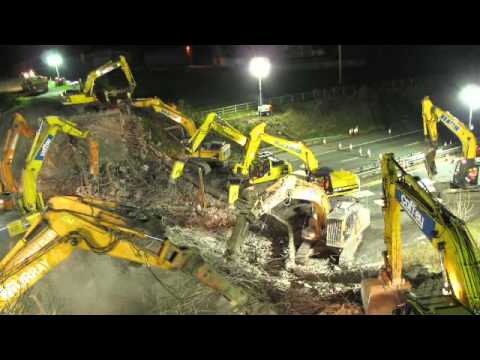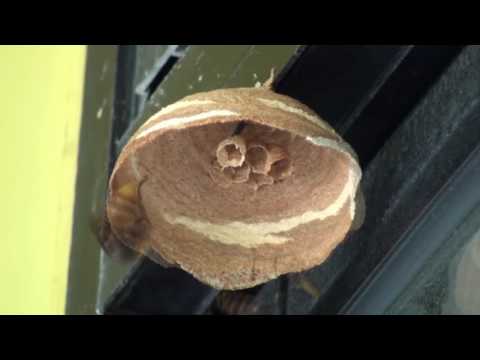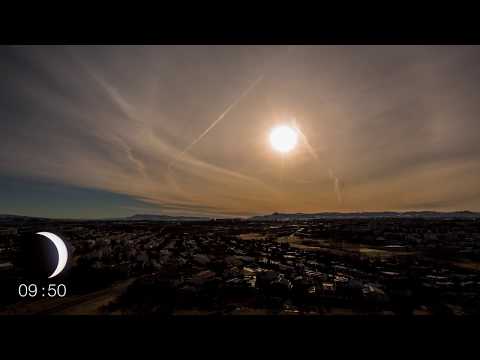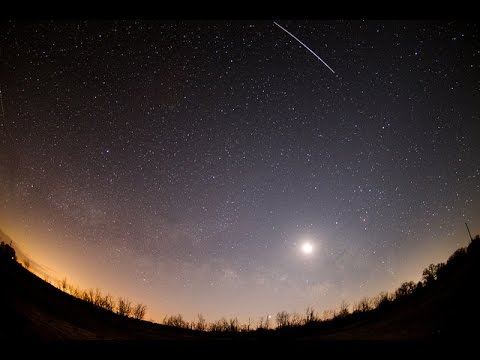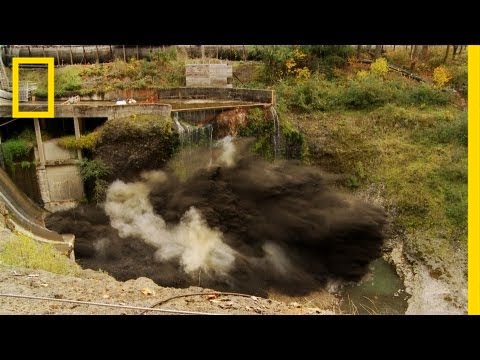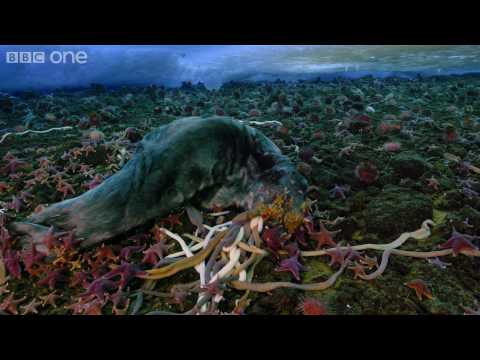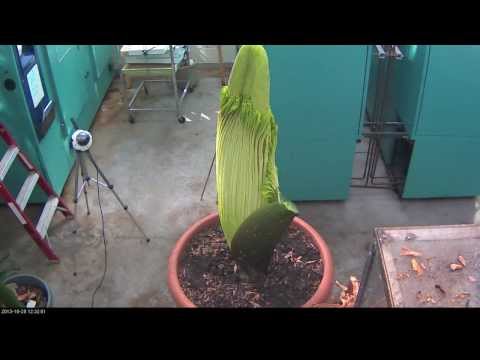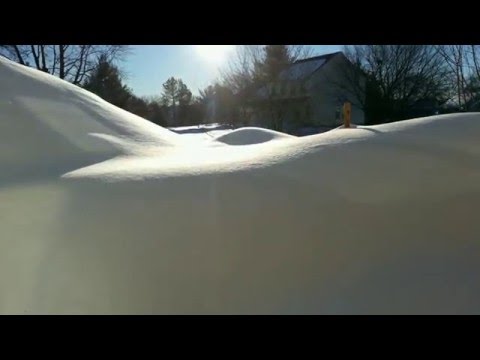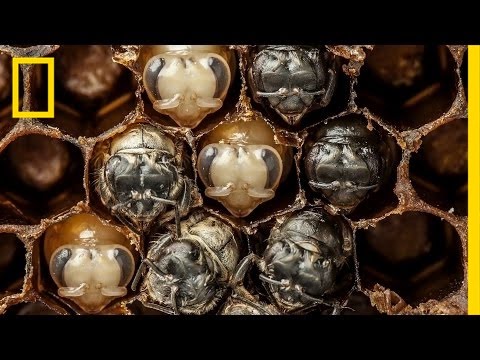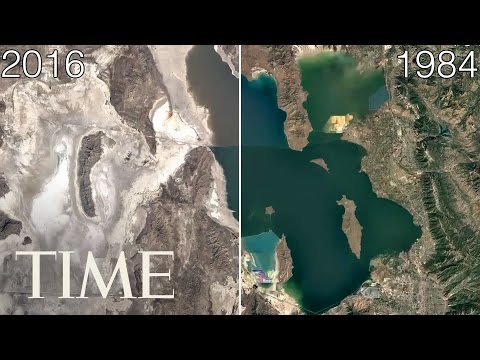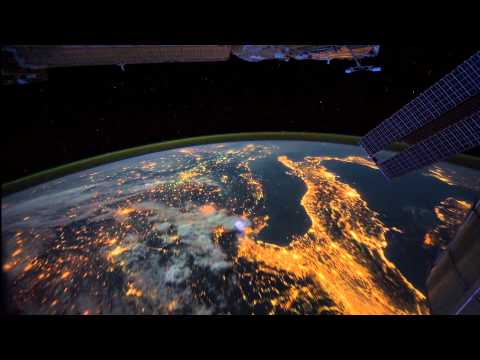SEE ALSO: 10 Amazing Videos About Incredibly Unique Places Time-lapse videos continue to grow in popularity because of their ability to condense information and show changes that are normally too slow to notice. There is something fascinating and deeply satisfying about watching a process that would normally take days, months, or even years, happen in only a few minutes. Another reason behind their growing popularity is the rapidly increasing access to smartphones worldwide. Many of the recent smartphones have built-in features that make time-lapses easy to capture and share. Here are 20 amazing time-lapse videos that might even inspire you to make one of your own.
20 Water Evaporation
Water evaporation is usually associated with higher temperatures; so many people do not realize how quickly water can evaporate in a normal indoor setting. Although increased heat makes water evaporate faster, it still turns into a gas called water vapor at any temperature. Even ice turns directly into gas through a transition called sublimation. Evaporation is one of the three main steps in the Earth’s water cycle alongside condensation and precipitation. It accounts for 90 percent of the moisture in the Earth’s atmosphere, while the other 10 percent is due to plant transpiration. But at lower temperatures, evaporation is typically too slow to be noticed. This time-lapse shows how water evaporates from a regular drinking glass over a period of 66 days.
19 Egg
Eggs contain a lot of two proteins—globulin and keratin. As globulin decays, a flammable and toxic chemical called hydrogen sulfide is released. And as keratin breaks down, it releases high levels of an amino acid called cysteine, which is full of sulfur atoms. Both of these proteins release the sulfurous smell that can immediately be recognized as rotting eggs. Most people do not have the time, interest or tolerance of stenches necessary to leave a raw egg on a plate and watch what happens to it over time. Luckily, the creator of the water evaporation time-lapse also recorded this 13-day long experiment, so nobody else would have to.
18 Realistic 3D Egg Painting
Speaking of eggs, there is one man who is incredibly skilled at painting them. Italian artist Marcello Barenghi has created six hyper-realistic paintings involving eggs. Sometimes called “the hyper-realist artist of the common things in the era of YouTube” Barenghi began his YouTube channel in 2013 and has painted many amazing artworks over the years. According to Barenghi, every single object has its own beauty—even an empty bag of potato chips. Without the time-lapse videos, many of his paintings could be easily mistaken for real objects.
17 Earthquake Resistant 30-Story Building Built In 15 Days
Although there is no sustained threat of earthquakes in China, the country has a long history of devastating natural disasters. Three of the ten deadliest earthquakes in known human history took place in China. This lurking threat has led to a lot of innovation among engineers and construction workers in China. Speed and precision are key, as the Broad Sustainable Building company shows in this time-lapse by building a 9.0 magnitude earthquake resistant 30-story building in only 15 days.
16 One World Trade Center
Located in lower Manhattan, the One World Trade Center has 496 restaurants, 5,400 hotel rooms and 1076 places to shop. It is not only the tallest building in New York City but the tallest in the Western Hemisphere and the seventh-tallest in the world. While it is fascinating to watch something as huge as the One World Trade Center be built, its construction started in 2006 and was not finished until 2013. Fortunately, a time-lapse of the building’s construction is available for those who do not have seven years to spare.
15 Bridge Demolition
Watching something be built is definitely enjoyable, but for some reason, it is even more satisfying to watch something be demolished. In this time-lapse, an entire bridge is taken apart and cleared within ten hours. Such a speedy accomplishment likely baffles the people who are used to seeing the bridge every day and suddenly find it missing. The old M9 Chartershall Bridge near Stirling, Scotland, had been struck by overheight vehicles several times and was beyond repair. Eight 30-ton rock-breakers were used to demolish the bridge within the ten-hour window. It was later replaced by a new bridge with greater headroom clearance.
14 Kitten To Adult Cat
When you see your cat every day, it can be hard to notice how quickly it grows and changes. Kittens typically go from weighing around 100 grams to 2-3 kilograms within ten months after birth. At 5-7 months old, cats reach sexual maturity. And their development nears its end after only two to three years. This short and sweet time-lapse shows the rapid growth of a silver tabby Maine Coon cat over a period of ten months. According to the video description, each image is taken 2-3 days apart at the start, increasing to 10-15 days by the end.
13 Flood Engulfing Railway
Floods are rarely taken as seriously as other natural disasters. Many underestimate their speed, power, and potential for devastation. However, floods can be just as dangerous and deadly as earthquakes, volcanos, and hurricanes. In fact, the China Flood of 1931 might be the deadliest natural disaster ever recorded. The Yangtze River runs through southern China, one of the most populated areas on Earth. When the river-basin received far-above-average rainfall in April 1931, followed by torrential rains in July, the stage was set for disaster. An estimated 3.7 million people were directly and indirectly killed by the flood over the course of several months. The flood in this unbelievable time-lapse took place in northern Queensland, Australia. It shows what has been called a “one-in-500-year” flood event, as a week’s worth of rainfall swallows the Corolla Creek railway. Thousands of people were displaced, and nearly 1,000 homes suffered severe water damage, placing the recovery bill at $124 million.
12 Giant Hornet Queen Building A Nest
Hornets are the largest eusocial wasps in the world. These social insects live in extremely organized colonies. The community hive, where hornet eggs mature into adults, is often constructed by chewing wood from buildings, fences, and telephone poles. By mixing the wood with saliva, it is converted into a papery construction pulp. Despite their remarkable construction skills, hornets are rarely a pleasant sight. Most hornet species are less toxic than bees, but their massive stingers still terrify children and adults alike. The one case when spotting a hornet may be more fascinating than scary is during its nest construction, which can be seen in this time-lapse.
11 Solar Eclipse
Captured on March 20, 2015, this stunning time-lapse shows the sunrise and solar eclipse over Iceland’s capital Reykjavík. An eclipse of the Sun occurs when the Moon moves between the Sun and Earth, blocking out the Sun’s rays. Because the shadow of the Moon is not big enough to engulf the entire planet, this event is limited to a certain area. Most calendar years have only two solar eclipses, with a rare maximum of five solar eclipses in a year. According to NASA, only 25 of the past 5,000 years have had five solar eclipses. The last time was in 1935, and the next year with five solar eclipses will be 2206.
10 One Month Of The Sun
For a giant burning ball, the Sun is surprisingly peaceful and relaxing to watch. This relatively long time-lapse shows one month of solar activity in great detail. The footage was taken by NASA’s Solar Dynamics Observatory (SDO), which captures an image every 12 seconds. The SDO was launched in 2010 for NASA’s Living With a Star program. This program was designed to understand the causes of solar variability and its impacts on Earth. SDO allows NASA to study the solar atmosphere on small scales of space and time and in many wavelengths simultaneously. This time-lapse, for example, was captured on wavelength 304.
9 Milky Way
While we are on the topic of space, there is another amazing time-lapse that deserves some recognition. This one captures a tiny slice of our galaxy and highlights some interesting objects in the night sky. At roughly 100,000 light-years across, the size of the Milky Way is difficult to even imagine. If one could look down onto our galaxy from the top, they would see a central bulge surrounded by four large spiral arms that wrap around it. Because the Milky Way is constantly rotating, the arms are moving through space. And the solar system is traveling with them. The solar system travels at an average speed of 828,000 kilometers per hour (515,000 mph). Even at this speed, the solar system would still need approximately 230 million years to travel all the way around the Milky Way.
8 Dam Removal
On October 26, 2011, the nearly 100-year-old Condit Dam was breached at its base with 318 kilograms (700 lb) of dynamite. The reservoir draining took about two hours and the last piece of the Condit Dam was removed in late 2012. Demolishing the 38-meter (125 ft) tall dam was a significant milestone for river restoration and dam removal nationwide. This spectacular time-lapse speeds up the draining process and shows how the White Salmon River in Washington state began to flow freely yet again.
7 Swarming Worms And Sea Stars
Many think that sea stars, also known as starfish, are adorable creatures. What they might not realize is that most sea stars feed by latching onto prey with suction-cupped feet and pushing their stomach out through their mouth. Then the starfish oozes digestive juices into its prey, dissolving tissues and sucking them out like soup. Watch this video on YouTube Because sea stars are slow animals, this time-lapse speeds up the graphic process. This video may not be for the faint of heart, as it shows hundreds of carnivorous sea stars swarm and begin to consume a baby seal carcass alongside three meters (9.8 ft) long nemertean worms that burrow inside the seal through its eye sockets.
6 Corpse Flower
The corpse flower is one of the world’s largest and rarest flowering structures. It blooms rarely and for a short time, during which the flower emits an odor similar to rotting meat or a decaying corpse. The smell, color, and even the temperature of the corpse flower are meant to attract pollinators and ensure the continuation of the species. In 2013, a time-lapse of Perry the corpse flower growing in the Gustavus Adolphus College greenhouse became famous due to the plant’s quick growth and massive size. The footage shows Perry from the moment it begins to grow, to the moment when the spadix collapses 45 days later.
5 Snowzilla
This minute-long time-lapse captures the blizzard unofficially nicknamed “Snowzilla.” The footage shows 48 hours of snowfall between January 22 and 24, 2016 in northern Virginia, USA. According to the photographer, the final measurement on the yardstick was 31 inches or 79 centimeters. While “Snowzilla” may have set a record for snowfall, experts consider it an economically minor event. The fact that the blizzard hit the East Coast during the weekend meant it was far less disruptive and costly than expected. Estimates range from $850 million to $3 billion.
4 Bees Hatch Before Your Eyes
Bee metamorphosis begins when the queen lays a tiny egg, only about 1.7 millimeters (0.07 in) long. Worker bees clean and prepare the cells for raising the brood and the queen lays a single egg in each cell. If a cell is not spotless, she moves to another one. Eggs hatch into larvae, which transform into pupae. That is when these little creatures begin to take on the familiar features of adult bees. The wings, legs, and eyes take shape until the fine hairs that cover the bee’s body finally develop. Fully developed bees chew their way through the wax capping and join their siblings. Thanks to modern technology and time-lapses, observing this amazing hidden process has become much easier.
3 Three Decades On Earth
Satellites have taken millions of high-definition images of earth over the years. NASA and the U.S. Geological Survey collated and assembled these images into something of a flip-book that reveals the slow changes of our world. Google finished what the two science agencies started by turning some of the choppy, hazy images into smoothly streaming videos. The three-decade time-lapse of earth unveiled by Google condenses decades of topographic changes into short clips. The Google Earth Engine team worked with over 5.4 million images taken since 1984 and gave images individual attention, filling in missing pixels and occasionally scrubbing away clouds. While the average high-definition TV image consists of roughly 300,000 points of light, the Google time-lapse images pack 3.95 trillion pixels into a single frame.
2 Earth From The ISS
The International Space Station (ISS) is the largest single structure humans ever put into space. Although its main construction was completed between 1998 and 2011, the station continually evolves to include new missions and experiments. The ISS flies at an average altitude of 400 kilometers (248 mi) above Earth and circles the globe every 90 minutes at a speed of 28,000 kilometers (17,500 mi) per hour. Not only is this spectacular journey available in a time-lapse format, but there is also a continuous live stream from the ISS that can be found on Youtube.
1 Portrait Of Lotte
Dutch filmmaker Frans Hofmeester took one short video of his daughter Lotte every week throughout her childhood. Once these videos were sped up and stitched together, they created one of the longest and most fascinating time-lapses ever created, spanning 18 years. This ongoing project has gone viral since the first video of Lotte growing from a newborn to a 12-year-old within mere minutes. However, as Hofmeester published new time-lapses every one to two years, his videos continued to gather millions of views. Another portrait of 20-year-old Lotte is coming soon but the current most popular time-lapse summarizing 18 years of her life has more than 11 million views. The Dutch filmmaker has also done the same for his younger son Vince, who is currently 16 years old. “Sometimes they did not feel like it,” said Hofmeester. “Then I said ‘Just one minute. Tell me about your ball game, did you win?’ That way I stalled them so I could complete the shot.”





